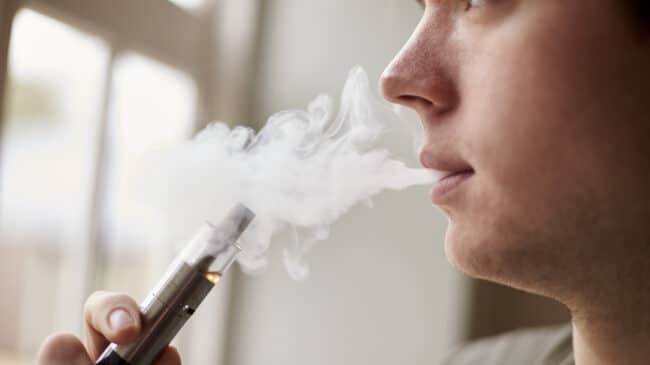The House Oversight Subcommittee on Economic and Consumer Policy is revisiting the controversial issue of youth vaping.
Before the COVID-19 pandemic, one of the most contentious issues in public health policy was e-cigarettes and their role in transitioning smokers away from cigarettes. While it’s widely accepted that e-cigarettes are substantially less harmful than combustible cigarettes and have helped millions of smokers quit, the relationship between youth smoking and vaping products has always been a critical concern.
From 2017-19, there was a substantial rise in the number of youth using e-cigarettes. While most kids continued not to vape at all and most of those who did used the products infrequently, the sudden increase led to increased scrutiny of the products and industry practices. To combat the rise in youth vaping, the federal tobacco age was raised to 21 in 2020. Flavors other than menthol and tobacco were banned in the cartridge and pod-based e-cigarettes until approved as necessary for the “protection of public health” by the FDA. Flavors in so-called open-system e-cigarettes, primarily sold in vape shops, were allowed to remain on the market.
Much has changed since Congress last visited this issue in 2020. Youth vaping fell 28.7 percent in 2020, according to data collected by the Centers for Disease Control and Prevention (CDC) before the imposition of school closures and local lockdowns. Youth smoking is at the lowest level on record at 4.6 percent, a 70.8 percent decline since 2011. According to an analysis of youth vapers, Juul, the market leader in pod-based e-cigarettes, is no longer as popular as previously thought, with 74.6 percent of youth vapers using a product other than Juul.
E-cigarettes and their flavors are now fully regulated by the FDA. All e-cigarette manufacturers had to submit applications to the FDA for review in September 2020. If the FDA determines the public health benefits of these products outweigh their risks, they will be authorized to remain on the market. If they fail a public health test, they will be removed.
The last time Congress committed time to consider the e-cigarette issue, there was a rash of lung injuries and deaths initially associated with vaping nicotine. But after an extensive investigation by the CDC, no nicotine e-cigarette was associated with any cases of lung illnesses. The CDC found that illicit THC cartridges often laced with vitamin E acetate were the culprits, and the agency removed its guidance advising adults to refrain from using e-cigarettes.
A wealth of new research has been published concerning the effectiveness of e-cigarettes as a smoking cessation tool and the results of various policies that have been passed to limit their availability. In 2020, the Cochrane Review often considered the gold standard in evidence-based medicine, released a review concluding e-cigarette users were more likely to quit smoking than those using traditional nicotine replacement therapies.
A study conducted by researchers at Yale School of Public Health found that adult vapers who used non-tobacco flavors had better odds of successfully quitting smoking than those using tobacco flavors.
In 2018, San Francisco banned the sale of all flavored tobacco products. The intention was to protect youth from tobacco use. But an analysis of the ban by Yale’s Abigail Friedman found that after the ban was enacted, youth in the San Francisco area had double the odds of smoking compared to similar jurisdictions with no tobacco flavor ban. Friedman claims:
“While neither smoking cigarettes nor vaping nicotine are safe per se, the bulk of current evidence indicates substantially greater harms from smoking, which is responsible for nearly one in five adult deaths annually. Even if it is well-intentioned, a law that increases youth smoking could pose a threat to public health.”
Amid the COVID-19 pandemic, many public officials speculated that vaping might increase the risk of contracting coronavirus. A study by Stanford researchers published in 2020 purported to show youth vapers were significantly more likely to test positive for COVID-19 than those who didn’t. Based on internet survey data, the study was heavily criticized for methodological flaws. Nevertheless, Congressman Raja Krishnamoorthi (D-IL) used the study as justification to ban the sale of all e-cigarettes for the course of the pandemic. But a study published by Mayo Clinic researchers of 69,264 patients published June 10 found no association between vaping and COVID-19.
E-cigarettes have significant potential to convert millions of more Americans to the less harmful form of nicotine consumption. According to an analysis from Georgetown University Medical Center, up to 6.6 million smokers could live substantially longer if all smokers converted to e-cigarettes over a ten-year period.
With e-cigarettes now fully regulated by the FDA, youth smoking rates at an all-time low and youth vaping down substantially, the dangers of limiting e-cigarettes either through direct prohibitions or taxes equivalent to those of more harmful cigarettes greatly outweigh any potential benefit.

